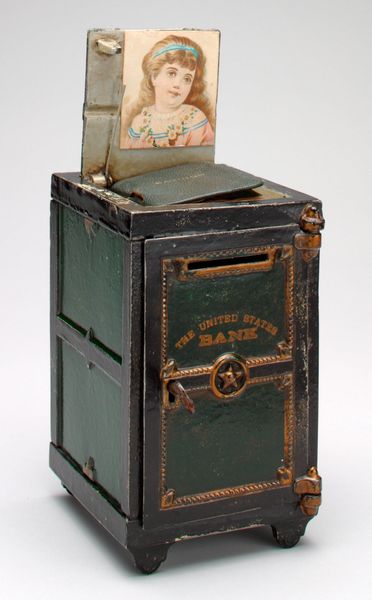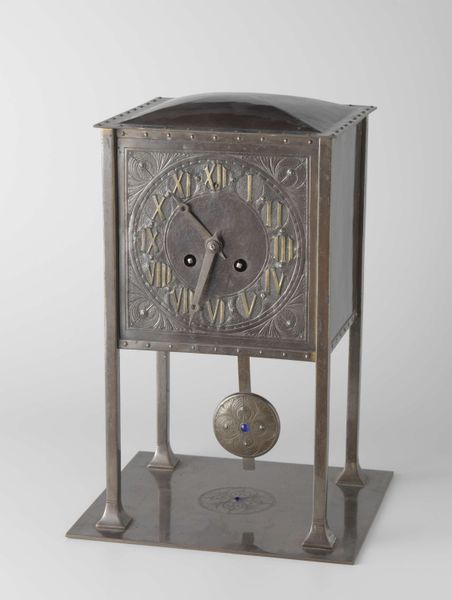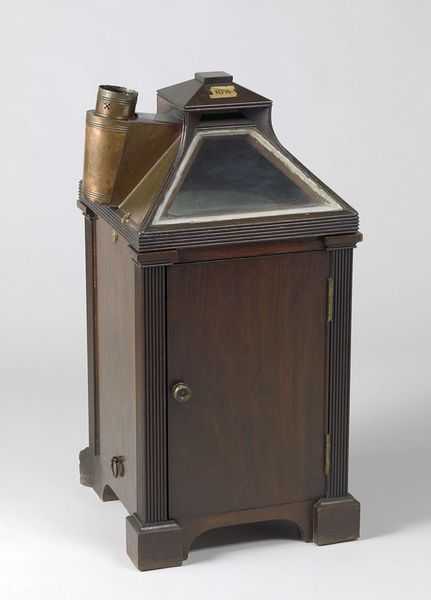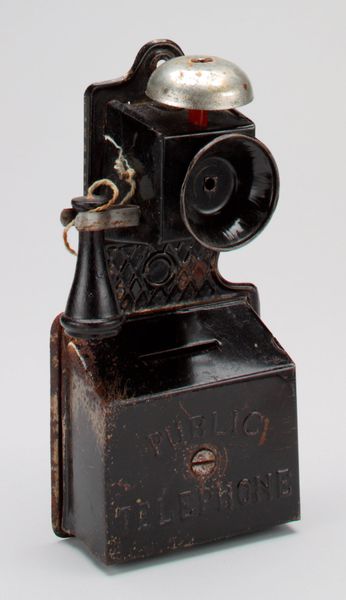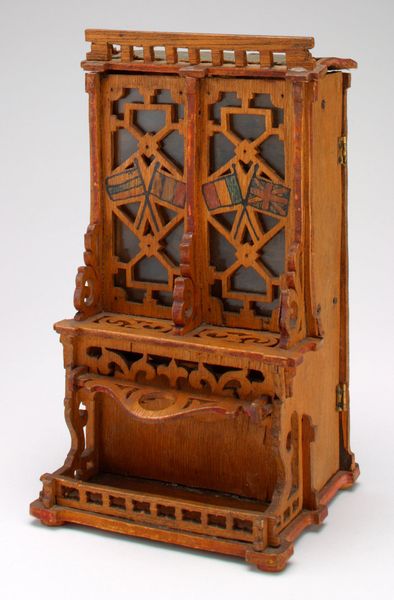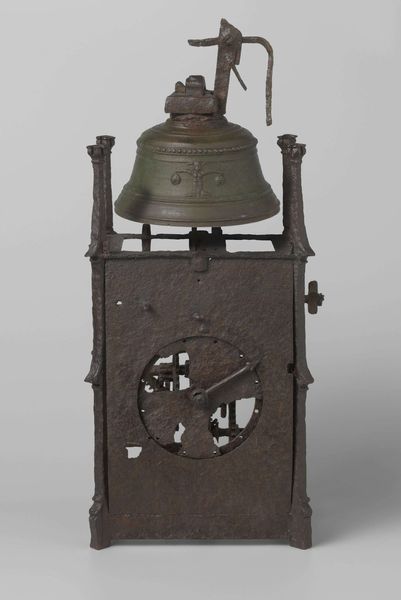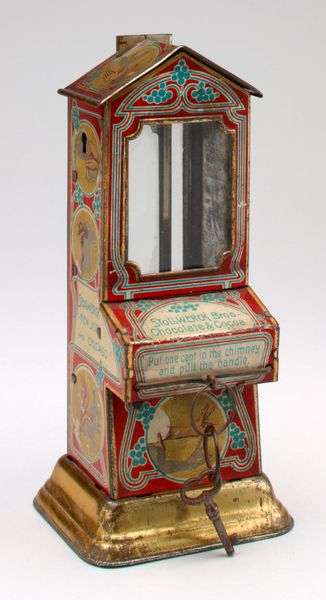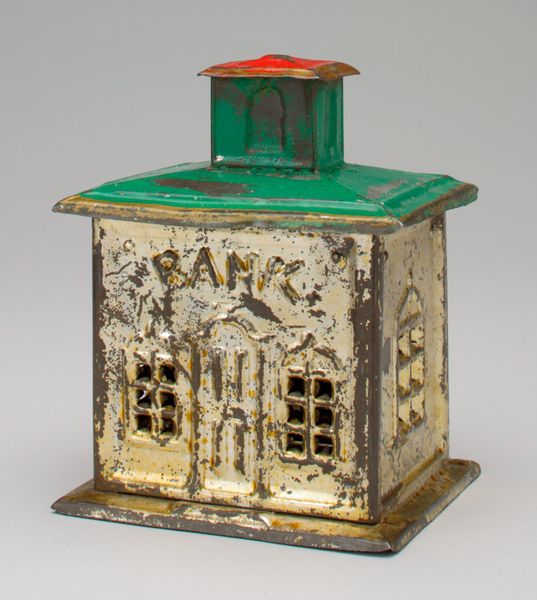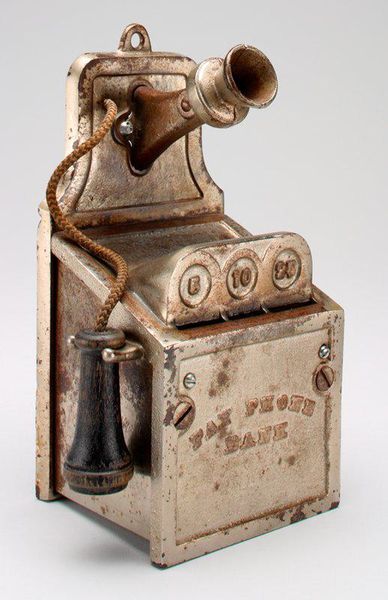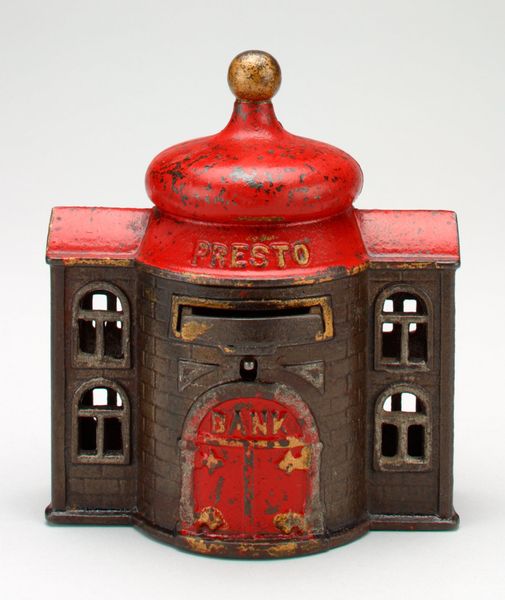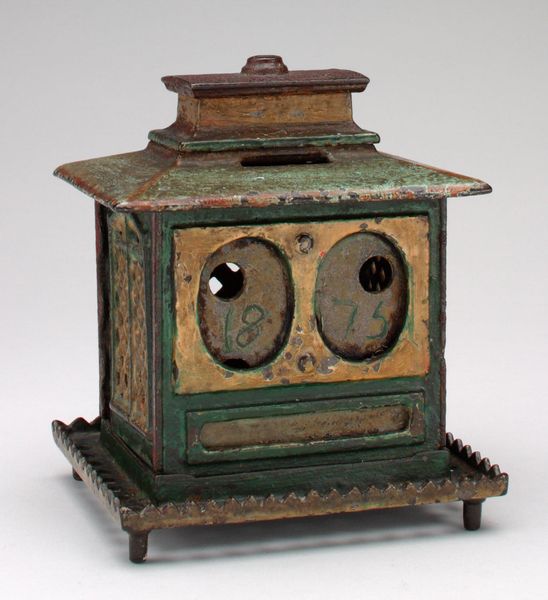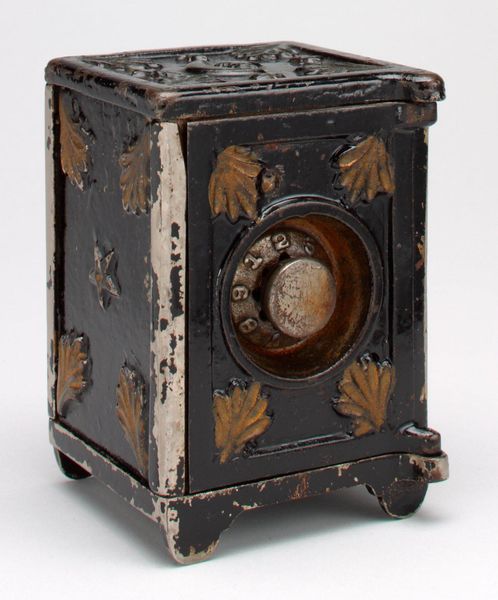
assemblage, metal, found-object, sculpture
#
assemblage
#
metal
#
found-object
#
figuration
#
sculpture
#
decorative-art
Dimensions: 5 3/4 x 2 1/2 x 2 1/2 in. (14.61 x 6.35 x 6.35 cm)
Copyright: No Known Copyright
Curator: Standing before us is "-Stop Sign," a captivating assemblage crafted around 1920 by the Dent Hardware Company. Housed here at the Minneapolis Institute of Art, this piece is an excellent example of found-object sculpture. What strikes you immediately? Editor: It's deceptively playful. Despite being titled "-Stop Sign", its bright, almost gaudy green, and its small, box-like shape give off more of a whimsical, almost childish, energy than one of strict authority. Curator: Exactly. The repurposing of, presumably, a commercial object or a set of its components reveals an interesting tension between functionality and decoration. We should really address its production context and how the company’s focus would impact the final construction. Its makers undoubtedly understood how to navigate mass production techniques of the era. Editor: Absolutely. Thinking about its positionality, I find it compelling to consider the piece within the context of the early 20th century and the social messages embedded within objects of mass consumption. Is the message truly about saving, or stopping a kind of consumerism taking root at that time? Curator: The tension is palpable. Note the color scheme chosen by the manufacturer. I see it signaling functionality over beauty. The materials would certainly make it a worthwhile item to recycle and keep in good repair, a quality very important at the time it was built, during which some countries saw economic struggles after WW1. Editor: Agreed. I'd even add that its bold figuration, the word itself acting as design, invites further consideration about societal values—even a certain degree of self-policing, given that "Stop Save" is directed toward an ambiguous “you” which turns back to look at society overall. Curator: Perhaps it encourages stopping the mindless pursuit of acquiring wealth. It would depend on what kinds of commercial establishments would offer such objects in the early 20th century, no? Editor: Precisely. The layering of meanings inherent in the repurposed sign, it offers an oblique yet engaging perspective on both industrial practices and societal norms in the roaring twenties. Curator: Indeed. Seeing such objects is as useful for studying design elements as it is for social dynamics and their effects on industrial craftsmanship. Editor: Well, that concludes this conversation. I find this piece deeply indicative of its moment in time and of continued, cross-generational societal dynamics. Curator: For me, it reinforces the power of material objects as reflections of industry practices that also double as cultural artifacts with strong visual qualities, which still resonate today.
Comments
No comments
Be the first to comment and join the conversation on the ultimate creative platform.
